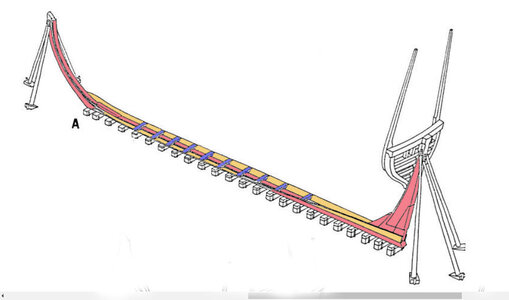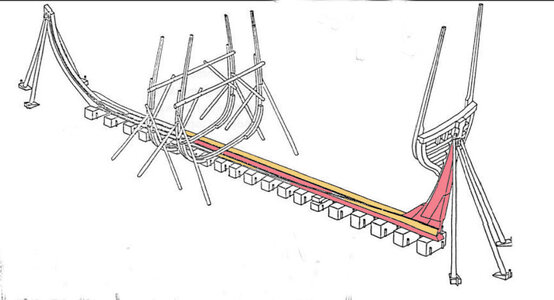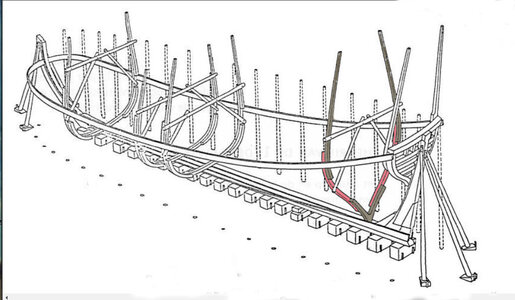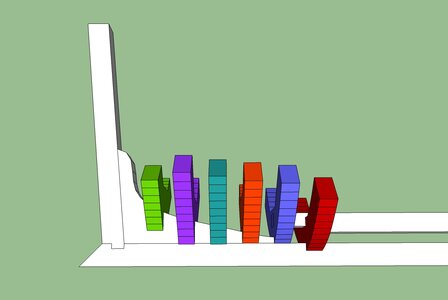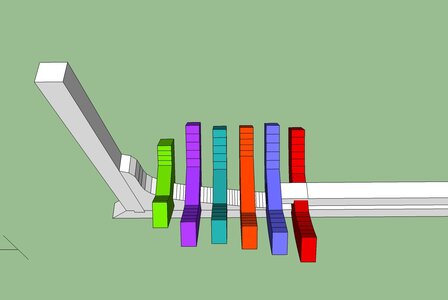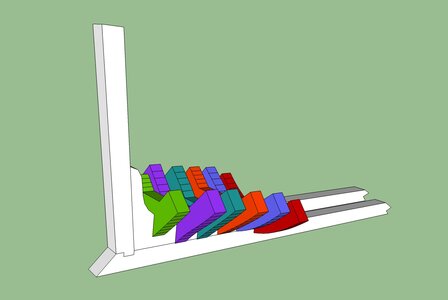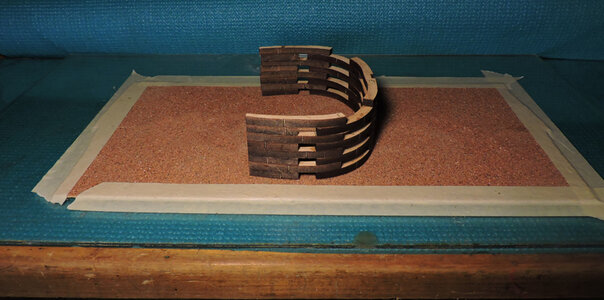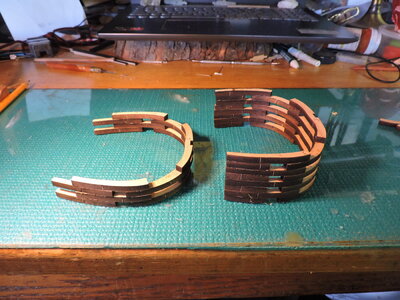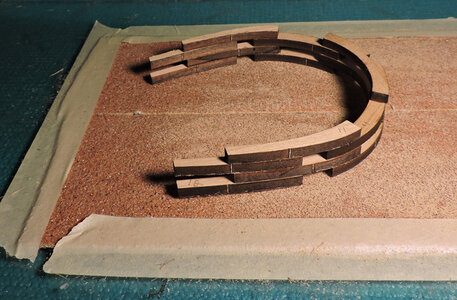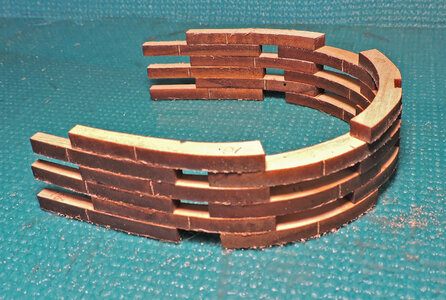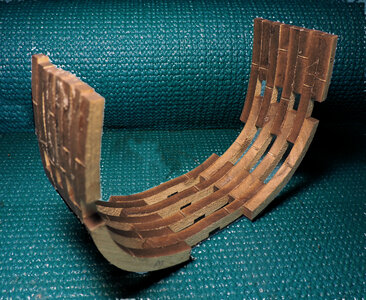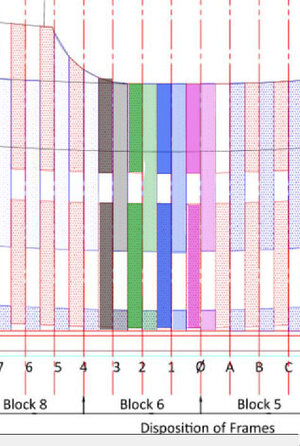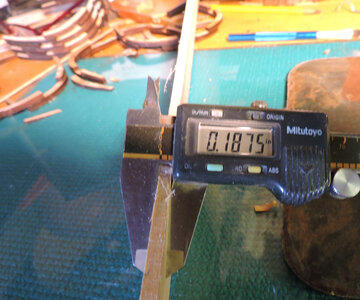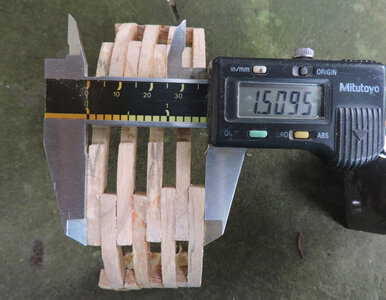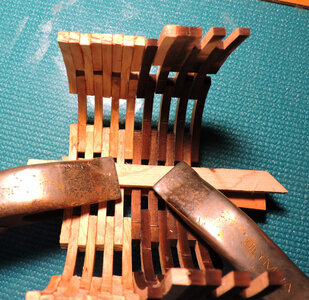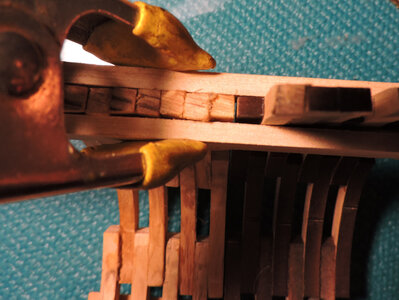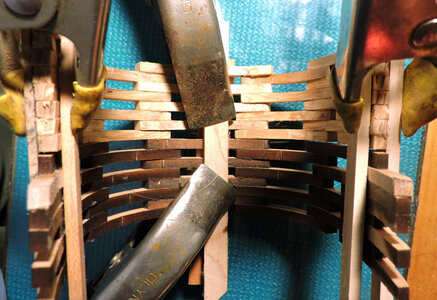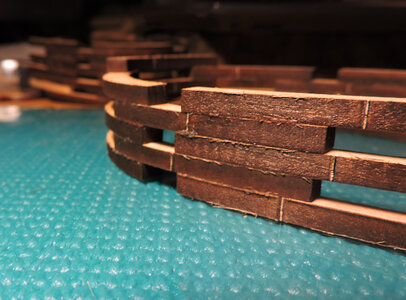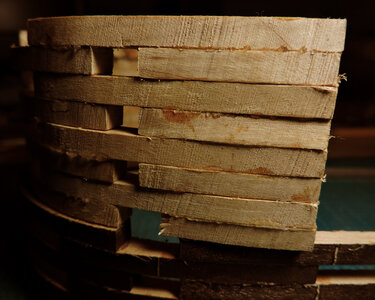- Joined
- Dec 1, 2016
- Messages
- 5,127
- Points
- 728

while i fiddle about with building frame blocks i will turn the build over to Mike. By the way the bow section is looking good.


NOW THIS ONE IS FOR ME I LIKE IT A LOT, AND I LOVE THE TWO GREAT MODELERS WORKING TOGETHER IN TANDUM WITH THIS MARVOLOUS TECH, AS BEFPORE NOT INTERESTED OR UNDERSTANDING THE HOW BUT TO SEE IT WORK IN REAL TIME THIS HAS WHAT I AM LOOKING FOR A TIME PERIOD THAT IS NEW AND IMPORTANT TO THE HOBBY AND A NEW METHOD OF PUTTING IT TOGETHER AND YES DAVE MIKE IS A GEM AND A GENUIS AT DOING THIS THANKS MIKE. GOD BLESS STAY SAFE YOU AND YOURS DON

Thankyou Don for the kind words this may be the first partner build but i assure you it is not the last.
there are builders that just want the facts of how to build and the tech stuff is secondary unless you are into the tech and research part of a build.
That was a discussion about the build should we just post a clean simple build like glue part A to part B, or should we go deeper into how we arrived at gluing part A to part B.
The Matthew is part of North American maritime history making it more than just another ship model it is a historic ship, built as close as we can to historic methods of ship building.
as i said once before it takes a village to create a thriving ship modeling community.



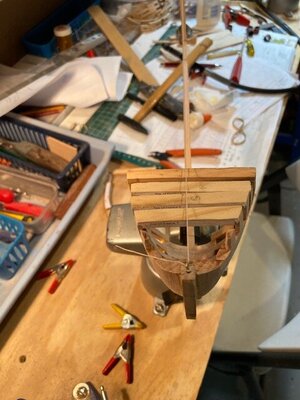
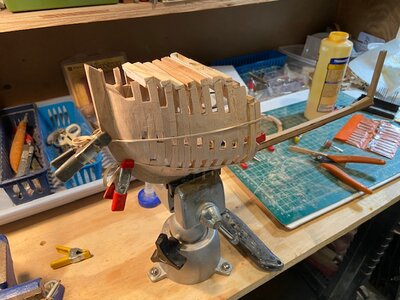
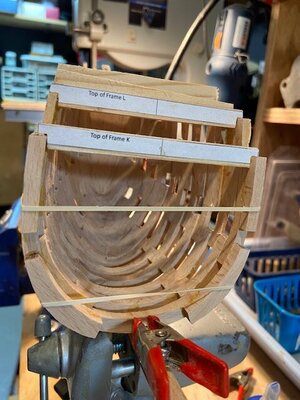
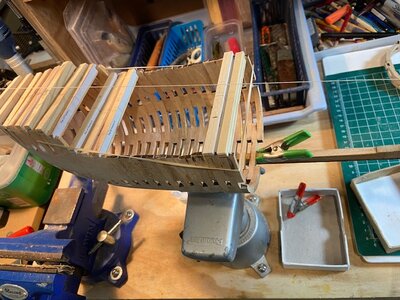
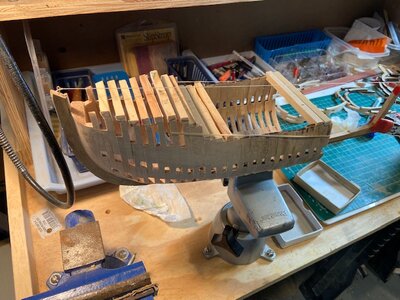
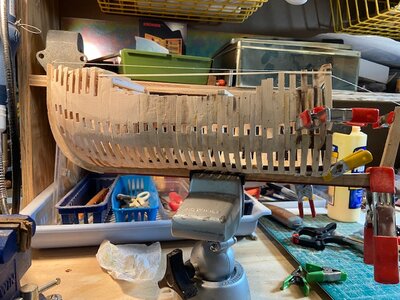
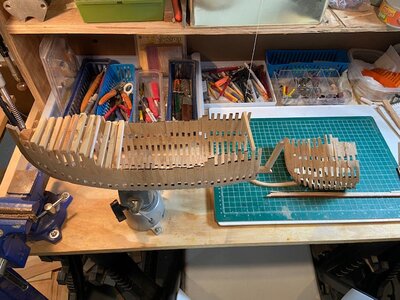

Good afternoon, very similar to the Spanish systemFraming continuation:
I started adding spacers at the top of the frames and a centerline string from bow to stern to help with the alignment.
The development of canted frames at the bow and stern of a ship greatly reduces the amount of material and labor in the construction of a ship. This model will give you an appreciation of the advancement.
As I added the new frames to the keel, I matched the interior of the ones installed while there is easy access. I have big hands which is not helpful for this type of work.
This set of progress photos includes one that shows where I was when I started the current build. I use it as a reminder to think before gluing stuff together lol.
View attachment 316069View attachment 316070View attachment 316071View attachment 316072View attachment 316073View attachment 316074View attachment 316075

Good afternoon, very similar to the Spanish system
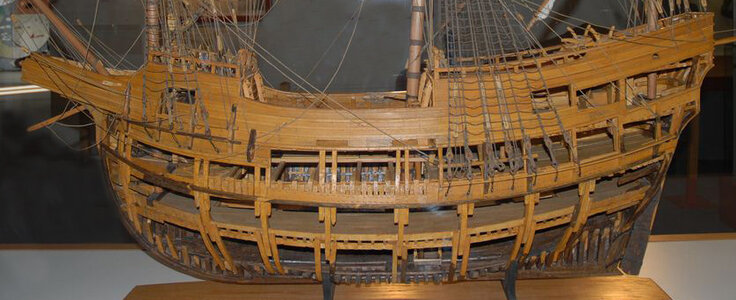
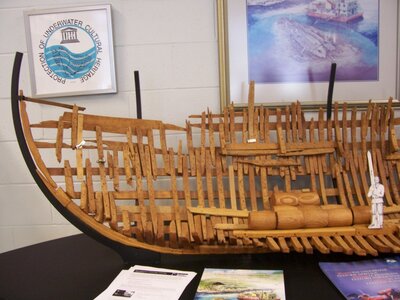
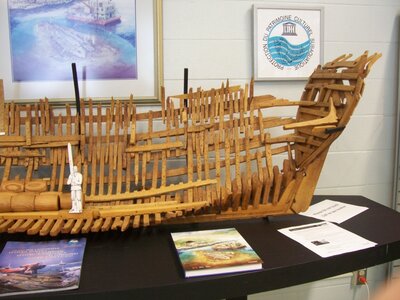


Thanks for getting back to me, great job with many hours, if it is permissible on what documentation you are building"This is an interesting build because for one thing jigs have become all the rage and the Chinese kits are making more and more elaborate jigs. This build does not use a jig.
the framing has never been done in a kit
it will require some pre-planning
the concept of the build is quite simple to the point you do not even need a set of plans unless you are scratch building. This build "hull assembly" is built by the numbers."
an inside joke and Mike refered to me as "the man without a plan" that came from the discussion to offer a set of plans. I thought there are kits offered that do not include plans. So if a detailed build was offered on line a builder should be able to follow the build rather than a set of plans. Well we will see as the project developes.
this project is out of the box thinking and breaks the rules of model ship building. When you buy a kit you get instructions that give you a step by step construction method thought of by the kit designer and how he built the model, same with buying a practicum of how to build a model, these are methods by one person. There is not just one way to build a model we have Mike's build and my build you may take ideas from both styles or hints and tips from other buiders and develope "your" way to build.

Thanks for getting back to me, great job with many hours, if it is permissible on what documentation you are building
